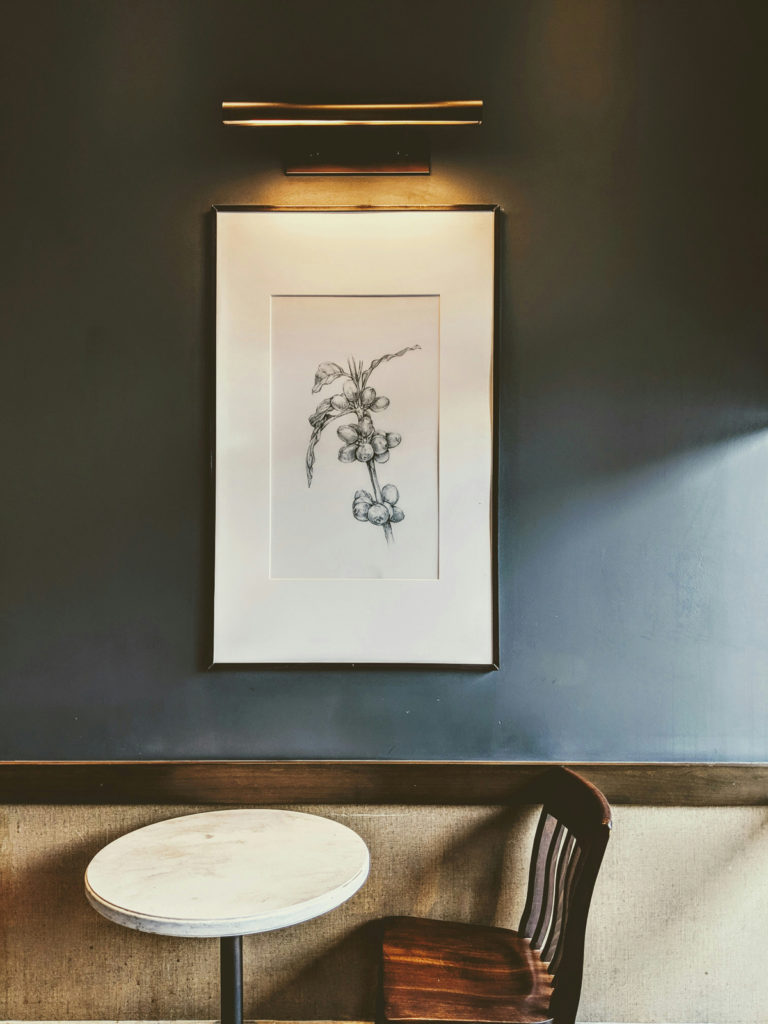
SAVE 20% TODAY! JOIN OUR NEWSLETTER NOW

Express Delivery Available
View delivery information
5 Star Rated
On Google & TrustPilot

Handmade in the UK
From the finest materials


Throughout the history of the dado rail, its popularity peaked in the Victorian era (1837-1901). As homes became increasingly crowded with furniture and other decorative items, the need to protect the walls beneath grew. Thanks to the Industrial Revolution, mouldings became mass-produced and more accessible, which even allowed middle-class homeowners to implement dado rails in their own homes. Often recognised for their opulence and detail, Victorian interiors set the scene for dado rails to become covered in intricate designs that accompanied richly patterned wallpaper or the wainscoting below.
It was during this era that the dado rail became a central feature in the decorative scheme of a room – its aesthetic appeal took precedence over its functional use. Many Victorian homes included dado rails to match other decorative mouldings, such as picture rails and crown mouldings, all combining to create a unified interior. This era also saw the rise of stencilled and painted dado rails.

The dado rail, which you may also know as the chair rail, is a horizontal moulding that runs along the middle or lower part of a wall. It was traditionally installed to protect walls from damage caused by the backs of chairs. Over time, its purpose, design and placement has evolved within interior spaces. The architectural feature now has more than just a functional element: it has become a staple in the interior design world, reflecting the changes in taste and architectural styles throughout history. In this article we have explored the history of the dado rail, from its origin to its use today.
In classical architecture, a dado referred to the lower part of a wall, which is situated beneath the cornice and above the baseboard. The dado rail then refers to the moulding used to divide this section from the upper part of the wall. Historically, its practical purpose was to protect the lower part of the wall from furniture scuffs, particularly chairs.
The history of the dado rail goes back to ancient Greek and Roman times, where the walls were often divided into three parts: the dado, the main field, and the cornice. The dado was often in a different colour or material to the other sections, which made it stand out, providing a visual foundation. In these civilisations, the dado and the rail that was associated with it were often made from stone or wood, typically they would be covered in detailed carvings and patterns to reflect the grandeur and wealth of a space.
During the Middle Ages, dado rails became more popular in Europe, particularly in the homes of the wealthy. Castles, churches, and manor houses often featured them to protect their walls from furniture, armour, and even swords. These rails were more commonly made from wood and had an array of designs, from simple to highly decorative. However, this all depended on the wealth of the building’s owner.
The Renaissance period saw a huge revival of classical art and architecture; this included the dado rail. As you may know, during this time period, European architecture took heavy inspiration from the ancient Greek and Roman styles, so the dado rail once again became a key feature in homes. It was during the Renaissance that the dado rail came to be viewed as a design element and not just a protective, practical feature. It was used to enhance the aesthetic appeal of a room. Patrons and wealthy homeowners would commission bespoke and elaborate dado rails often covered in delicate carvings, sometimes even gilded finishes to showcase their wealth and refined taste.
The dado rail became a more standardised feature in interior design during the 17th and 18th centuries, particularly in public buildings and grand homes around Europe. Baroque and Rococo styles – which were traditionally characterised by their decorative and ornate elements – came to influence the design of dado rails. These tended to be highly decorated with carvings, scrollwork and even paintings. The rail typically separated the wainscoting (wood panelling) on the lower portion of the wall from the plastered or painted surface above.
In Georgian England (1714 – 1830), the dado rail came to be an essential feature of fashionable interiors, which were characterised by their elegance, proportion and symmetry. Dado rails were used to visually balance a room by dividing the walls into satisfying proportions. It was during this era that more standardised designs of dado rails were developed, with simpler and more refined forms that complemented the architecture of the time.
During the early 20th century, the use of dado rails started to decline. The modernist movement, which placed emphasis on open spaces, simplicity and functionality, rejected the ornate and cluttered interiors of the Victorian era. Walls were preferred bare, and the once essential dado rail fell out of favour. But it was in the 20th century that people became intrigued with period architecture and design again, particularly in the mid-century onwards.
In the mid to late 20th century, interest in historic preservation and traditional design increased, so unsurprisingly, the dado rail made a comeback. This was particularly true in the process of restoring older builds; homeowners sought to preserve the natural character and history of the interiors. Today, the dado rail is used in both modern and traditional homes; it is valued for its protective purposes as well as its aesthetic appeal.
In contemporary interior design, the dado rail has many purposes. While it can still be used to protect walls, it is more commonly used as a decorative element. Designers often use them to create visual interest by dividing the walls into sections and then contrasting the colours, materials and textures. In some cases, dado rails are purely used for their decorative value, adding classical elegance to an otherwise modern interior.
Whether a house is historic or modern, the dado rail remains a multifaceted feature of interior design. Its history reflects the broader trends in architecture and interior design over time, from the grand and classical style of ancient Greece and Rome to the minimalist trends of the 20th century. Today, the dado rail still offers a practical and decorative benefit to many homes, exemplifying that even the simplest architectural features can have a rich and fascinating history.
Delivery Information


Please enter details for a quote

We offer a FREE shaker style wall panelling design service but only for single wall designs. Please enter the details below and we will respond with your design ASAP!

Fill in the form below and one of the team will deal with your request!
